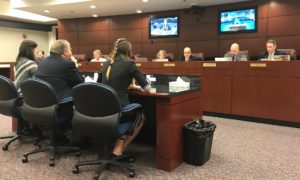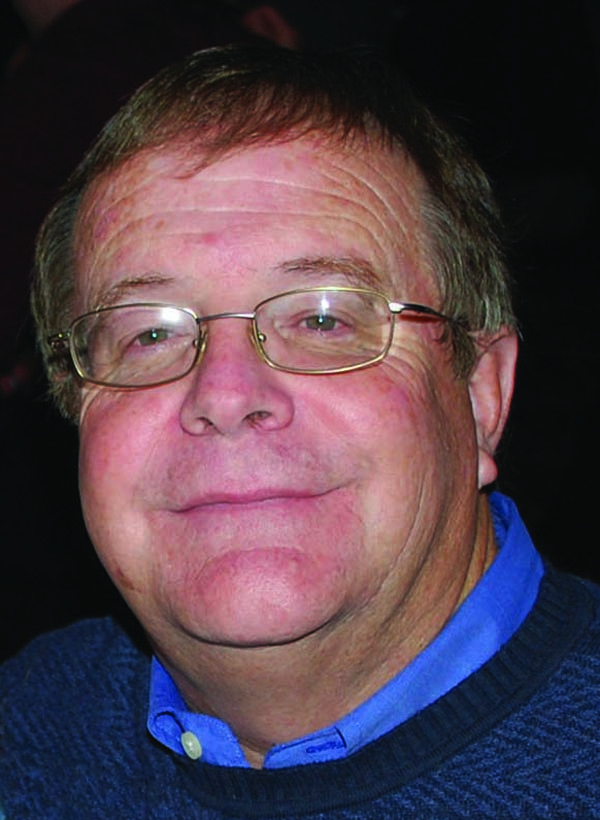By Steve Ranson
New Voices emerged to counteract a Supreme Court decision in the 1980s involving the Hazelwood School District v. Khulmeier. Essentially, this ruling allowed educators to censor student-written articles, stop newspapers from being distributed to the student body and retaliate against journalism advisers who dared promote reasonable free speech and supported their students.
“For about 30 years, thanks to a U.S. Supreme Court decision known as Hazelwood, school administrators have been allowed to censor or discipline student journalists when they can assert a ‘legitimate pedagogical purpose’ for doing so,” said University of Nevada, Reno journalism professor Patrick C. File in his remarks to the Nevada state Senate’s Education Committee. “Across the board, journalism education groups and the 10 states that have adopted their own standards since that decision agree that this standard lacks clarity and tends to undermine quality journalism education.”
We, as a society, defend reasonable free speech as long as it doesn’t cause panic or, in schools, a significant disruption of their education. Students freely express themselves, for example, in government classes to discuss trending topics. In literature, students offer their opinion and interpretations of both classical and modern pieces … all without repercussion.

New Voices has gained momentum over the past few years with a handful of states passing legislation to give student journalists more say in how they present the news. Nevada is on the brink of becoming the next state to pass the New Voices legislation, Senate Bill 420, after Vermont and Arizona passed New Voices within the past 10 days.
This legislation is not a Democrat nor Republican issue. It must be a bipartisan acceptance to show Nevada’s lawmakers treasure free speech as long as it does not disrupt the learning process. The time has come for Nevada’s lawmakers to endorse any recent changes or amendments made to the legislation so that New Voices passes prior to the May 26 deadline and for Gov. Brian Sandoval to sign the legislation.
The full Assembly is scheduled to vote soon on the legislation.
State Sen. Nicole Cannizzaro, D-Las Vegas, introduced SB 420, which was presented to both the Assembly and Senate education committees. Cannizzaro said the current standard in Nevada essentially allows teachers and school administrators to censor student journalists from printing anything critical of the school or its administration.
Furthermore, Cannizzaro said her bill states that those free speech rights are protected, “unless they are libelous or creates a clear and present danger of substantial disruption.”
Examples of school administrators censoring high-school journalists and their publications are widespread.
• A school newspaper in Phoenix was censored after one of its reporters questioned in print the effectiveness of the school district’s campaign against teenage smoking.
• A school paper was criticized and censored in Tampa, Fla., because it published data released by the U.S. Dept. of Education that revealed academic achievement gaps between Caucasian and minority students.
• A high-school paper in California was closed down for one year after it published a photo of a student burning the U.S. flag. We should note both the community and area newspapers also printed photos of the same incident.
Yet, some school administrators supported their student journalists and school newspapers to publish articles that exposed problems within the four walls of learning.
One such case that gained national attention occurred in 2010 in Fallon when Churchill County High School editor Lauren McLean researched, wrote and published an article dealing with the selection of CCHS students for the state honor choir. The school administration supported her right to publish the article despite the objections of the Churchill County Education Association.
Through a series of articles, columns and editorials, the Lahontan Valley News supported both the First Amendment right of McLean to exercise her right as a student journalist and the Churchill County School District — to include former Superintendent Carolyn Ross and high-school principal Kevin Lords.
Kansas high-school students last month wrote an article exposing their incoming principal as a person who had obtained questionable degrees in education. Because of their reporting, the principal resigned.
Supt. Destry Brown praised the student reporters, saying, “I appreciate that our kids ask questions and don’t just accept something because somebody told them.” He told the Pittsburg Morning Sun they “did a great job with the research.”
These are examples of student journalists being allowed to research and publish top-notch work, yet stories abound across the United States of superintendents and/or principals who quash a story — which is just as accurate as the Kansas article — because it’s embarrassing.
The Nevada Press Association supports SB 420 as do numerous school districts. Now, the Senate must look at any changes made since its vote, yet we encourage both the Legislature’s Democrats and Republicans to do their part and approve Nevada’s New Voices bill and send it to the governor. This legislation is long overdue, and students deserve the opportunity to be both seen and heard.
 Nevada Press Association The best in Nevada journalism since 1924
Nevada Press Association The best in Nevada journalism since 1924
